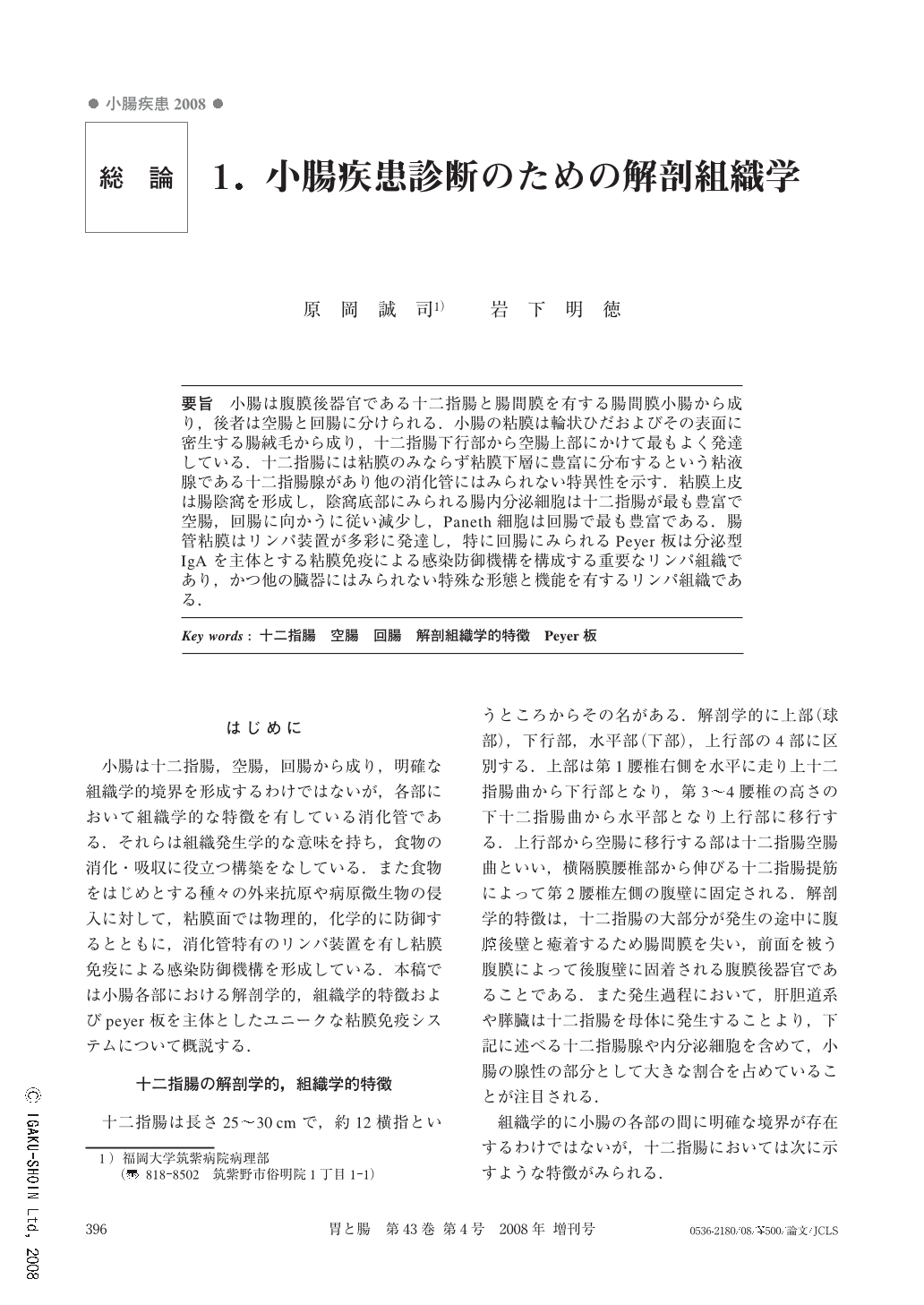Japanese
English
- 有料閲覧
- Abstract 文献概要
- 1ページ目 Look Inside
- 参考文献 Reference
- サイト内被引用 Cited by
要旨 小腸は腹膜後器官である十二指腸と腸間膜を有する腸間膜小腸から成り,後者は空腸と回腸に分けられる.小腸の粘膜は輪状ひだおよびその表面に密生する腸絨毛から成り,十二指腸下行部から空腸上部にかけて最もよく発達している.十二指腸には粘膜のみならず粘膜下層に豊富に分布するという粘液腺である十二指腸腺があり他の消化管にはみられない特異性を示す.粘膜上皮は腸陰窩を形成し,陰窩底部にみられる腸内分泌細胞は十二指腸が最も豊富で空腸,回腸に向かうに従い減少し,Paneth細胞は回腸で最も豊富である.腸管粘膜はリンパ装置が多彩に発達し,特に回腸にみられるPeyer板は分泌型IgAを主体とする粘膜免疫による感染防御機構を構成する重要なリンパ組織であり,かつ他の臓器にはみられない特殊な形態と機能を有するリンパ組織である.
The small intestine consists of duodenum which is the retroperitoneal organ and intestinum tenue mesenteriale which is the mesenteric portion of the small intestine. The latter is divided into the jejunum and ileum. The inner side of the small intestine is characterized by the presence of transverse mucosal folds known as Kerckring's folds and villi that line the mucosa. They are prominent from the descending part of the duodenum to the proximal jejunum. In the duodenum, the mucosa and submucosa contains numerous mucus-secreting glands known as Brunner's glands that are not seen in other parts of the gastrointestinal tract. The mucosal epithelium forms the crypts, which contain enteroendocrine cells and Paneth's cells at the base of the crypts. The enteroendocrine cells are most abundant in the duodenum, and the number decreases from jejunum to ileum. Paneth's cells are prominent in the ileum. The lymphatic apparatus multifariously develops in the intestinal mucosa. Especially, Peyer's patches seen in the ileum are very important lymphoid tissue that constitutes the host defense mechanisms offered by the mucosal immune system mainly composed of secretory IgA, and have characteristic morphology and functions not seen in other organs.

Copyright © 2008, Igaku-Shoin Ltd. All rights reserved.


